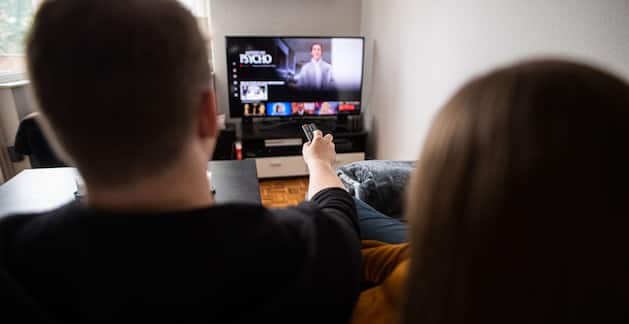How will we watch TV in 2023? How will the TV landscape develop? Constanze Gilles, General Manager Direct-to-Consumer at the TV streaming provider Zattoo, has put together the three biggest trends for 2023.
After there was enormous growth during the corona pandemic, the forecasts at the beginning of the year did not paint a good picture for Germany’s streaming landscape. There was even talk of the end of the streaming boom. Live television already knows this tenor. The end of linear television has been predicted for years. But the corona pandemic and the outbreak of war in Ukraine have shown that live TV is more important than ever.
In times of crisis, the demand for trustworthy information increases. Results from the Reuters Institute Digital News Survey 2021 show that for the majority of the population, television is the most important source of news. Even among the younger age groups, the numbers have increased compared to last year. That’s remarkable for a generation that many pundits believed had long since lost live television to video-on-demand services and social media. What is certain is that live TV will remain relevant – also in 2023 and beyond.
Everyone knows it: You want to spend a cozy evening in front of the TV, rummage through a multitude of apps and content and still can’t find anything suitable. The answer is Free Ad Supported Streaming TV, or FAST TV for short. The idea: Users no longer have to click through an overwhelming amount of suggested content, but the content comes directly to them free of charge via various channels and with advertising. Does that sound familiar? I agree. FAST TV channels are linear and often programmed by genre. A further argument for the fact that linear television succeeds again and again in adapting to changing user needs.
Constanze Gilles has been active in the media and entertainment industry for 20 years. Since June 2022 she has been General Manager Direct-to-Consumer (DTC) at the TV streaming provider Zattoo. In her position, she is responsible for the development of Zattoo’s end customer business in Germany, Austria and Switzerland. Previously, she worked at the streaming service Joyn and at Sky Germany in the areas of business development, strategy and partnerships.
Particularly in view of the rise in inflation, viewer acceptance of advertising-financed, more cost-effective content will continue to rise in the coming year. This is also supported by the Advanced TV study by the outdoor advertising marketer Goldbach Germany: Two thirds of TV households in Germany own a Smart TV or a TV set that is connected to the Internet via a so-called streaming device. Up to five paid or free streaming apps are used regularly. Users pay up to 29 euros per month for this. Two thirds of them would be willing to accept additional advertising if the content was offered free of charge instead. Many of the major US providers are also reacting to this development. They introduce cheaper subscriptions with advertising or, in view of the high production costs, raise the previous subscription prices for offers without advertising. A development that will continue in 2023.
Already 17 percent of all TV households primarily watch television via the Internet. That is around seven million households in Germany – and the trend is rising. This development is at the expense of traditional reception methods such as satellite, cable or terrestrial. Because the advantage of Internet television is convincing: With the right device, users can watch television anywhere there is an Internet connection.
TV streaming apps work across devices. In addition to the live program, they offer the option of time-shift television by recording, pausing or starting programs from the beginning. At the same time, a variety of on-demand content can also be streamed via most providers. In addition, consumers save, especially in comparison to cable television. Because when receiving via cable, you pay significantly more in contrast to other types of reception. The reason for this are the monthly fixed costs of around ten euros for the cable connection. In addition, there are costs for a comprehensive TV product, for example in HD. This is the conclusion reached by Verivox tariff experts in a comparison of transmission paths and additional costs.
This will be exciting against the background of the upcoming elimination of the apportionability. From July 2024, the cable connection may no longer be billed as part of the ancillary rental costs. From this point on, around 12 million consumers will have freedom of choice with regard to their television reception. By then, at the latest, they have to actively decide whether they want to stay with cable television or switch to another way of receiving. The last time the TV market was so shaken up was when DVB-T was switched off in 2017. With this in mind, the popularity of Internet TV will only continue to grow in the years to come.
So 2023 will be an exciting year for the TV industry and its customers. There will be a lot of movement, not only with Netflix, Disney and Co., but also with the classic live TV providers. 2023 will be the year of FAST-TV and advertising-financed streaming offers. In times of rising living costs and energy prices, consumers will reconsider their consumer behavior more carefully. And even if on-demand services continue to gain in popularity over the next few years, traditional live television is and will remain the window to the world. Because topicality and proximity are what moves people. This will also remain the case in 2023.
The Mission Female business network, founded by Frederike Probert, is actively committed to more female power in business, society, media, culture, sports and politics. It unites successful women across all industries with the aim of making further professional progress together.
